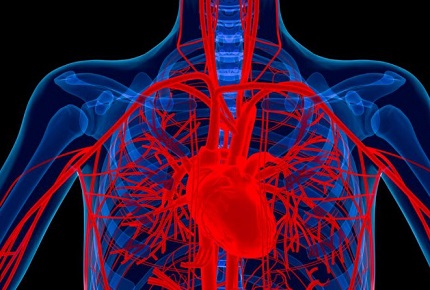Nikhil Prasad Fact checked by:Thailand Medical News Team Jun 23, 2024 9 months, 2 weeks, 3 days, 18 hours, 32 minutes ago
Cardiology Updates: Iron is essential for our bodies, playing a key role in various functions, from transporting oxygen to producing energy in cells. However, too much iron can be harmful, leading to a form of cell death known as ferroptosis. This
Cardiology Updates news report explores a recent study that uncovers the impact of iron overload on heart cells and how it triggers a harmful chain reaction leading to cell death.
 The Hidden Dangers of Iron Overload: How Iron Can Harm Heart Cells
Understanding Ferroptosis
The Hidden Dangers of Iron Overload: How Iron Can Harm Heart Cells
Understanding Ferroptosis
Ferroptosis is a type of cell death that is dependent on iron and is characterized by the accumulation of lipid peroxides. Unlike other forms of cell death, such as apoptosis, ferroptosis is triggered by iron and oxidative stress, which causes damage to cell membranes.
The Study in Focus
Researchers from the Lomonosov Moscow State University and the Russian Clinical Research Center for Gerontology conducted a study to understand how iron overload affects heart cells, specifically H9c2 cardiomyocytes. They used ferric ammonium citrate (FAC) to induce iron overload and observed its effects on these cells.
Key Findings
-Iron Induces Reactive Oxygen Species (ROS) Production: The study found that supplementing heart cells with iron led to the production of reactive oxygen species (ROS) in mitochondria. These ROS are highly reactive molecules that can cause significant damage to cell components.
-Lipid Peroxidation: The researchers observed that ROS production led to lipid peroxidation in the mitochondria. Lipid peroxidation is a process where free radicals "steal" electrons from the lipids in cell membranes, causing cell damage.
-Accumulation of Lipofuscin: One of the interesting findings was the accumulation of lipofuscin, a yellow-brown pigment composed of lipid-containing residues of lysosomal digestion. Lipofuscin is considered a marker of aging and oxidative stress.
-Ferroptosis and Cell Death: The study confirmed that the sequence of events starting from ROS production to lipid peroxidation culminates in ferroptosis, leading to cell death. This process was evident in the reduced viability of H9c2 cardiomyocytes after iron supplementation.
Preventive Measures
The researchers also tested various substances to prevent ferroptosis and found that certain antioxidants could inhibit this harmful process.
-SkQ1 and Methylene Blue: These antioxidants were particularly effective. SkQ1, a mitochondria-targeted antioxidant, and methylene blue, which inhibits ROS production in the mitochondrial electron transport chain, both prevented lipid peroxidation and ferroptosis.
Implications for Heart Health
This study highl
ights the delicate balance required in managing iron levels within the body. While iron is necessary for life, excessive iron can lead to detrimental effects, particularly in heart cells. The findings suggest that managing iron levels and using specific antioxidants could be potential strategies to protect heart cells from iron-induced damage and ferroptosis.
Future Directions
The insights from this study open up new avenues for research and treatment. Developing therapies that target and reduce mitochondrial ROS production could be key in preventing ferroptosis. Additionally, understanding the role of lipofuscin in cellular aging and how to manage its accumulation could have broader implications for age-related diseases and conditions linked to oxidative stress.
Conclusion
Iron, while essential, can be harmful in excess. This study sheds light on the mechanisms by which iron overload can damage heart cells, leading to cell death through ferroptosis. By understanding these processes, new treatments can be developed to protect heart health, particularly in conditions associated with iron overload.
The study findings were published in the peer reviewed journal: Biomolecules.
https://www.mdpi.com/2218-273X/14/6/730
For the latest
Cardiology Updates, keep on logging to Thailand Medical News.
Read Also:
https://www.thailandmedical.news/news/ferroptosis-and-its-role-in-multi-organ-complications-in-covid-19-unveiling-potential-therapies
https://www.thailandmedical.news/news/american-study-finds-that-sars-cov-2-nsp6,-nsp8-and-m-proteins-damage-human-cardiomyocytes-by-reducing-atp-levels
https://www.thailandmedical.news/news/research-finds-that-sars-cov-2-s-and-orf-9b-proteins-alters-metabolic-profiles-and-impairs-contractile-function-in-cardiomyocytes
